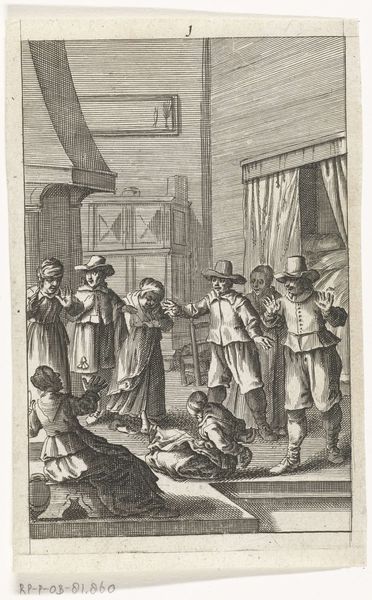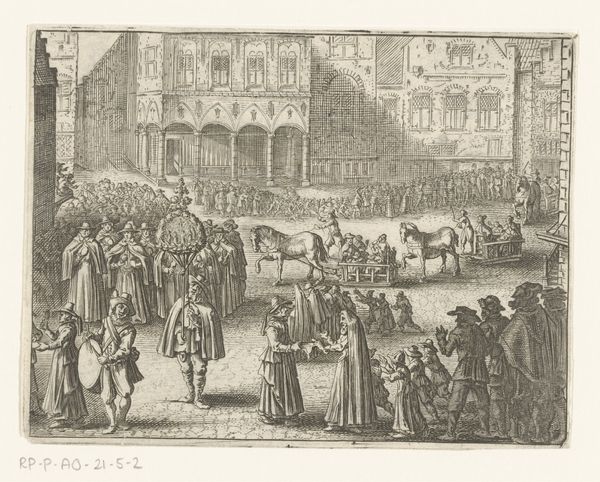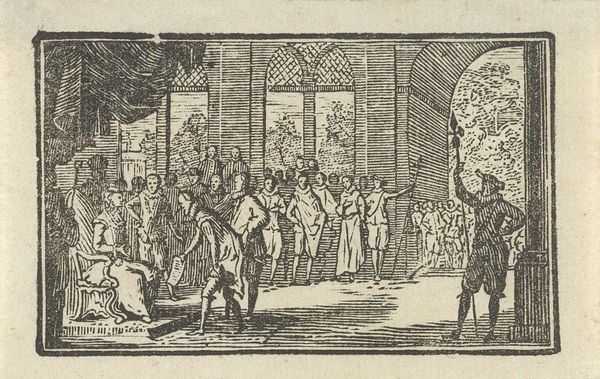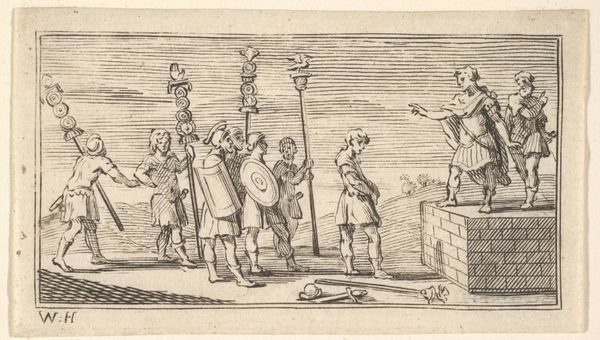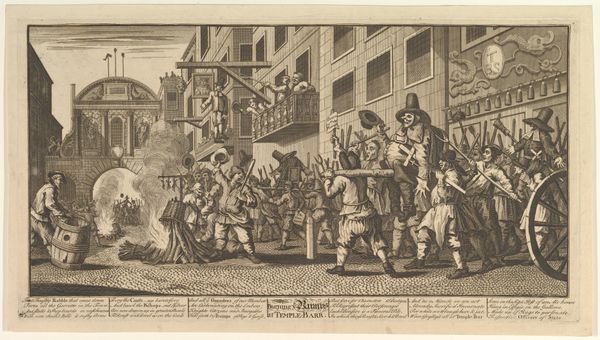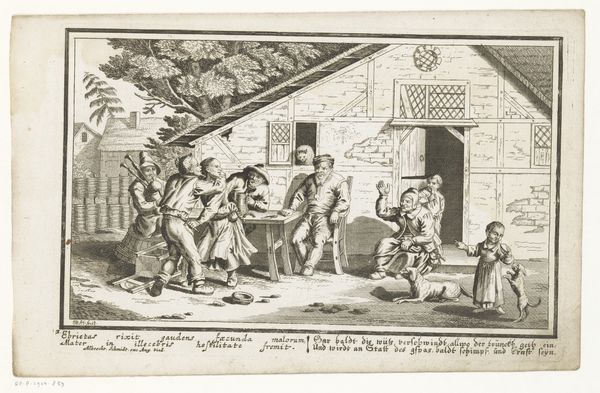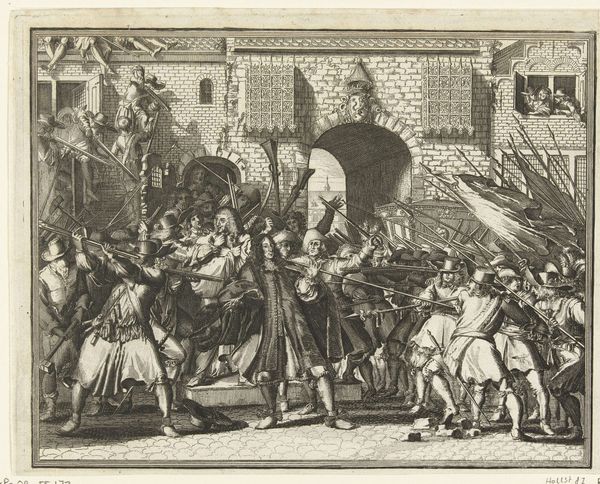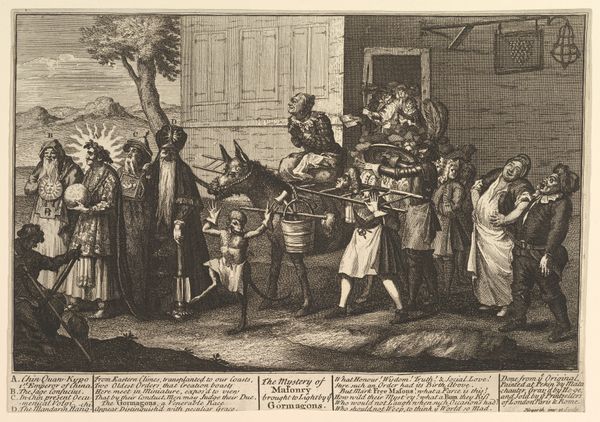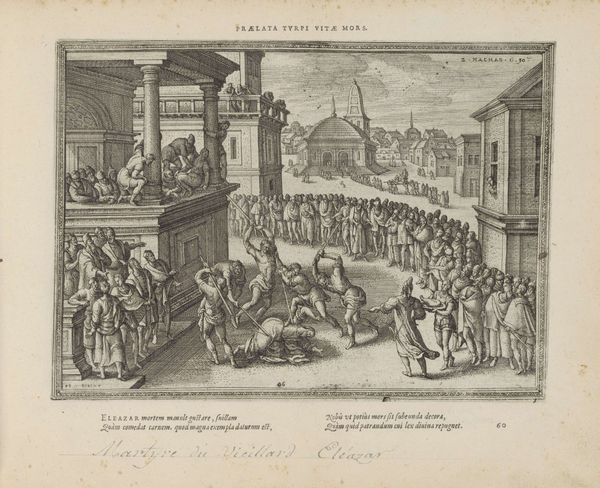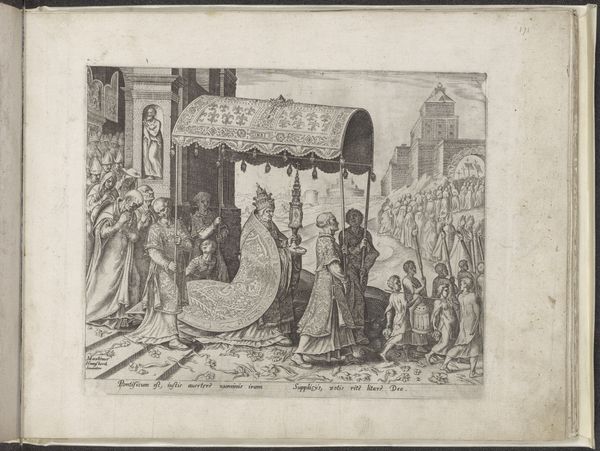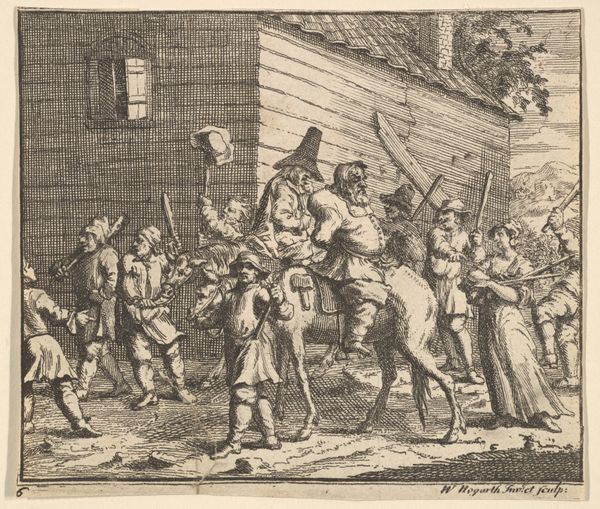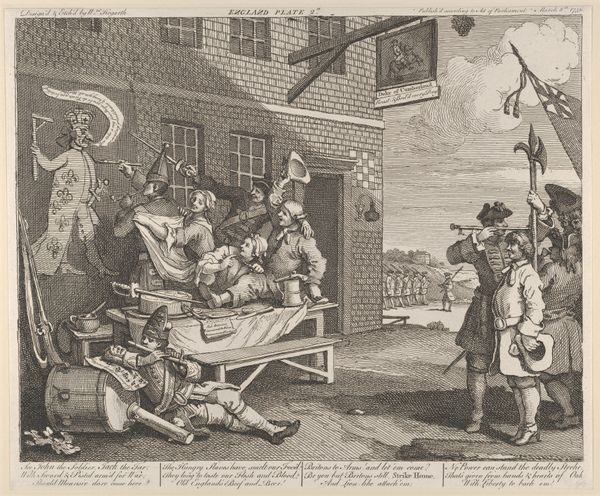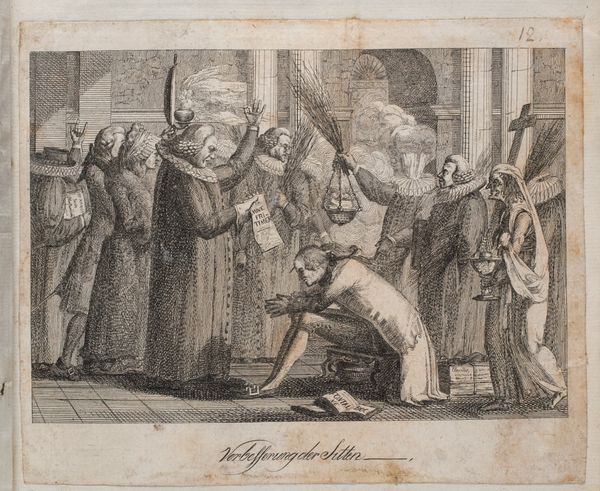
Dimensions: plate: 4 3/16 x 5 11/16 in. (10.7 x 14.5 cm) sheet: 6 3/16 x 9 in. (15.7 x 22.8 cm)
Copyright: Public Domain
Editor: This is “Benefit Ticket for Spiller,” a print made in 1788 by Samuel Ireland, now residing at The Met. It strikes me as a chaotic snapshot, maybe a street scene? The sharp lines create a bustling energy, almost theatrical. What’s your take on this, especially with all those little details crammed in? Curator: Chaotic is a great word! It's like a visual cacophony. But look closer – that chaos is precisely the point. It’s organized chaos. See how Ireland uses linear precision to capture a moment in time but amplifies the underlying social commentary, doesn't he? He is drawing you into a real historical event, a Benefit, like a charity event, for the actor Spiller. All those characters represent theatergoers or supporters. Now, why do you think the artist used engraving instead of painting, which was en vogue at the time? Editor: Hmm, engraving allows for such sharp detail, which seems vital for all the textual elements like "pit" or "box" inscribed on tickets. It also allowed for mass production? Curator: Exactly! Prints like these circulated widely. They're more than art; they're social documents. Note the body language too; isn’t there something almost satirical, caricatured, in their postures? This artwork, whilst being Baroque and of linear style, isn’t trying to merely document a thing as it is but it uses exaggerations. Editor: It’s fascinating how the style elevates what seems mundane into something almost biting. So, I initially saw chaos, but now I see how it's meticulously crafted for impact! Curator: And I now realize how easy it is to be seduced by superficial observations when these prints offer up a deeper narrative. The devil, as they say, is always in the detail!
Comments
No comments
Be the first to comment and join the conversation on the ultimate creative platform.
